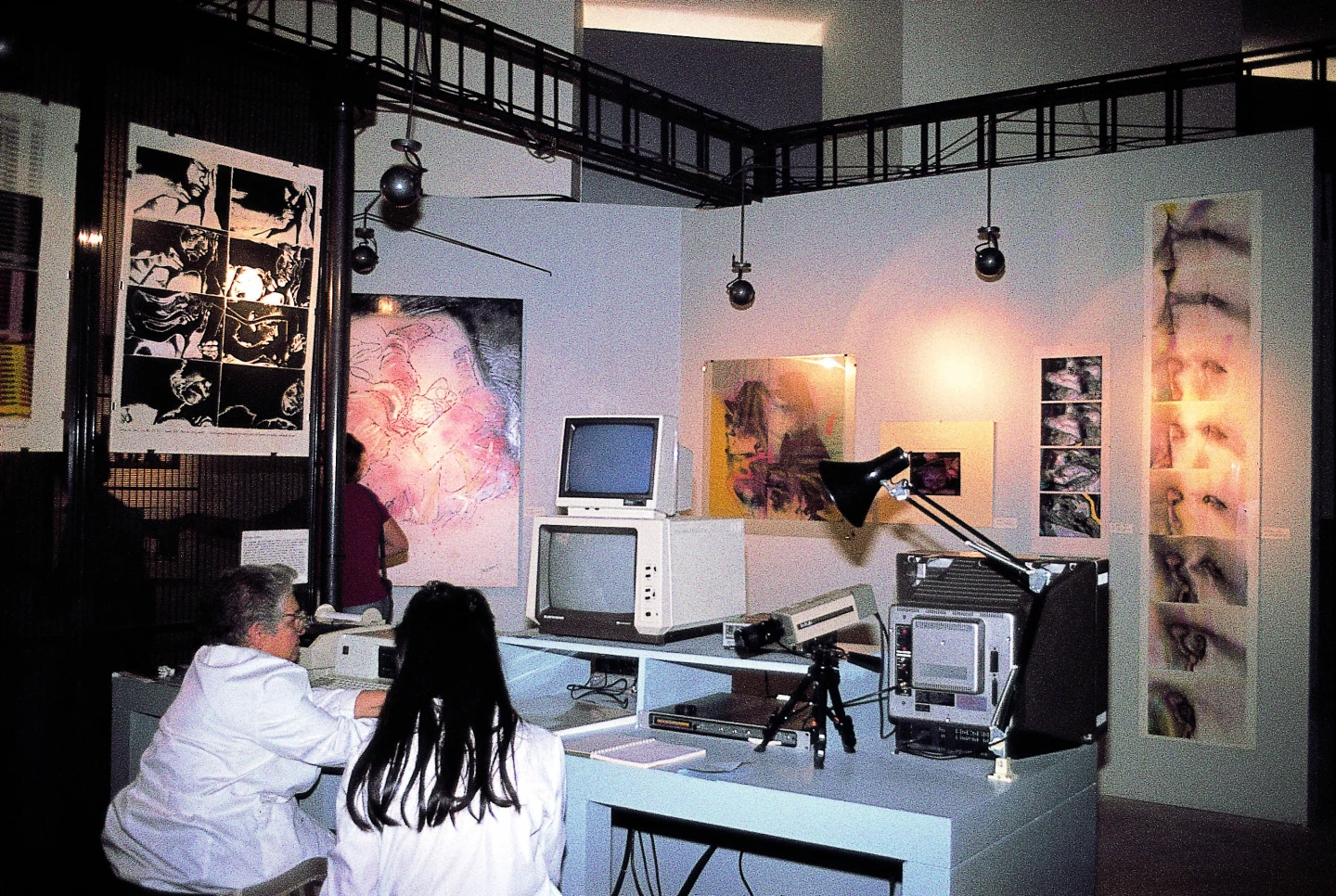Procesos: cultura y nuevas tecnologías

At the dawn of the Internet, still a long way from its domestic ubiquity, this exhibition displays new ways of creating, capturing, dealing with, transmitting and storing information content. At a time of clear and inevitable technological and cultural change, new instruments, supports and channels significantly widen the fields and methods of artistic expression and consider new relationships between the creator and viewer of artworks.
The exhibition highlights the disappearance of set definitions between art disciplines, interspersed here in the same language - the language of technology. Moreover, the concept of authorship also undergoes significant modifications in terms of traditional standards. The laser, hologram, electronic graphics, online databases, “logics” (nowadays known as “programmes” or software), satellite or cable television and CD-ROMs are used alongside other mediums and supports to achieve these artistic aims.
The common thread of the exhibition is the participation of visitors in creation processes as well as the interactive nature of the works on display. These are arranged into three areas: “Memory”, where new forms of registering and storing knowledge can be contemplated; “Communication”, clearly showing the greater accessibility to the culture of this new instant world, and finally “Creation”, which shows the new resources and tools available to artists.
The Baschet brothers’ electronic music and sound sculptures, operated by visitors, coexist alongside works brought in from the Siggraph Art Show, a computer exhibition held in San Francisco in 1985. There is also Manorine, an installation that generates sounds through the body movements of a dancer, in the Centro de Arte space.
The cinema section features a compilation of scenes from commercial films that heavily employ new technology, such as Blade Runner, Back to the Future and Cocoon, which serve as a counterpoint to more personal offerings such as Fire in Castilla, José Val del Omar’s somnambulist essay on Tactil Vision, which won an award in Cannes in 1961. A pioneering essay that, like those from the Computing Centre of the Madrid Complutense University (1968), is displayed alongside works by Sonia Sheridan, the founder of Generative Systems (1970-1982) from the Art Institute of Chicago, whose participation involves a live presentation of her work.
This is also joined by three video installations from Nam June Paik, Antoni Muntadas and Paloma Navares, together with a selection of video art, with participation from renowned artists such as Bill Viola, Joan Jonas, Marina Abramovic, Ant Farm, Peter Campus and Joan Bastida, in addition to Juan Carlos Eguillor’s digital animation Menina K (1986).
Artists
Organised by
Ministerio de Cultura
Image gallery

